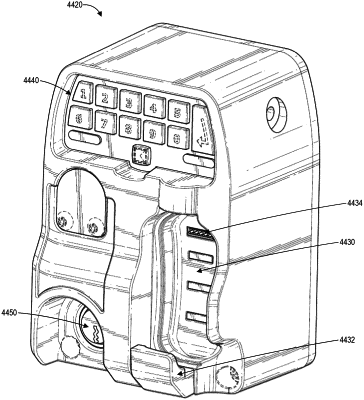| CPC E05B 47/02 (2013.01) [G07C 9/00571 (2013.01); E05B 47/0012 (2013.01)] | 20 Claims |

|
1. A method of detecting a lock state of an electronic lock, the method comprising:
by an electronic key comprising a hardware processor,
receiving a first signal indicating that the electronic lock is in an unlocked state;
storing a first time value corresponding to an unlock event time based at least in part on receiving the first signal;
transmitting a second signal to the electronic lock indicating that the electronic key is requesting a response from the electronic lock;
determining that the electronic lock is in a locked state based at least in part on not receiving a response to the second signal; and
storing a second time value corresponding to a lock event time based at least in part on determining that the electronic lock is in the locked state.
|